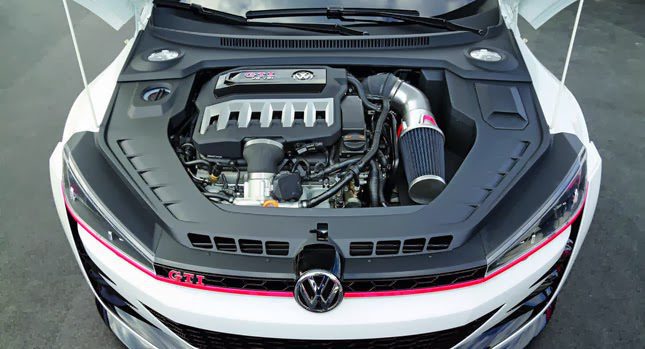Update Your Vehicle with a New Opel Corsa Engine
Discovering the Inner Functions of a Compact Vehicle's Engine System
As drivers, we often consider approved the detailed procedures that take place within the confines of our automobile's engine system. The compact yet intricate equipment that moves us ahead is a marvel of engineering accuracy and control. From the controlled surges in the combustion chamber to the precise timing of fuel shot, every component plays a crucial role in the smooth operation of the engine. In this exploration of a compact lorry's engine system, we will untangle the inner functions of this mechanical harmony, dropping light on the mysteries that drive us forward on our day-to-day journeys.
Burning Refine Review
The burning procedure in a portable lorry's engine system is a vital device that effectively transforms fuel into energy to power the lorry. This process happens within the burning chamber of the engine, where fuel and air mix, ignite, and produce controlled surges. The burning procedure consists of four major phases: intake, compression, exhaust, and power.
During the intake stage, the piston relocates downward, drawing in a mix of air and fuel into the burning chamber. The next stage, compression, includes the piston relocating up, compressing the air-fuel mix to raise its potency. Subsequently, in the power stage, the ignition system fires up the compressed combination, resulting in a rapid growth of gases that forces the piston pull back. This downward activity produces the power required to drive the car. In the exhaust stage, the burnt gases are eliminated from the combustion chamber through the exhaust shutoff, preparing the chamber for the following cycle. This cyclic burning procedure is fundamental to the procedure of a small vehicle's engine system, making certain efficient energy conversion for propulsion.
Piston and Cylinder Communication

The piston's specific fit within the cyndrical tube is crucial for maintaining ideal compression and protecting against energy loss throughout combustion. Limited clearances between the piston and cyndrical tube wall surfaces make sure efficient sealing, permitting the piston to relocate efficiently without permitting gases to leak past. Appropriate lubrication is also important to decrease friction and put on in between these components, improving longevity and efficiency.
Additionally, the layout and products used in producing the piston and cylinder influence engine efficiency and resilience. Modern engines often utilize lightweight yet long lasting materials like light weight aluminum alloys for pistons and cylinder liners to minimize inertia and enhance thermal efficiency. Generally, the harmonious communication between the piston and cylinder is fundamental to the engine's capability and total efficiency.
Fuel Injection System Performance
Gas injection systems in compact vehicle engines play an important role in exactly supplying gas to the burning chamber for regulated and efficient ignition. The fuel shot system works by injecting fuel right into the combustion chamber at the ideal moment during the engine's operation (opel corsa engine). This exact timing makes certain that the gas mixes uniformly with the air for correct burning, bring about enhanced fuel effectiveness and minimized discharges
There are largely two kinds of gas injection systems utilized in portable lorry engines: port fuel shot (PFI) and direct gas shot (DFI) PFI systems infuse gas into the consumption port before the intake shutoff, while DFI systems inject gas directly into the combustion chamber. Both systems have their benefits, with DFI supplying click to find out more much better gas atomization and PFI supplying a much more economical solution.
Recognizing Engine Air Conditioning Devices
Effective procedure of a compact automobile's engine relies greatly on the effectiveness of its cooling mechanisms. The air conditioning system in a portable car generally consists of several components functioning together to control the engine temperature. Comprehending these engine air conditioning mechanisms is essential for keeping the efficiency and durability of a small lorry's engine system.

Exhaust System Elements Explained
The ideal performance of a compact automobile's engine cooling systems relies on a corresponding system known as the exhaust system, which comprises different crucial elements for making certain reliable emissions and engine performance. The exhaust system includes elements such as the exhaust manifold, catalytic converter, muffler, and tailpipe. The exhaust manifold gathers exhaust gases from the engine's routes and cyndrical tubes them to the catalytic converter. The catalytic converter then transforms dangerous contaminants in the exhaust right into less unsafe discharges prior to releasing them with the muffler and tailpipe.
One important part of the exhaust system is the oxygen sensing unit, which keeps track of the oxygen degrees in the exhaust gases to assist manage fuel consumption and guarantee optimal engine performance. opel corsa engine. In addition, the resonator may be present in some exhaust systems to lower noise degrees. Generally, the exhaust system plays an essential role in preserving engine effectiveness, minimizing dangerous discharges, and ensuring a quieter driving experience for portable car proprietors

Verdict
To conclude, the compact car's engine system is an intricate mix of components that collaborate to assist in the combustion procedure, convert gas right into power, and remove waste gases. Comprehending the internal functions of the engine system, including the piston and cyndrical tube interaction, gas injection system, engine cooling mechanisms, and exhaust system elements, is important for keeping optimum efficiency and performance of the car.
The combustion process in a small car's engine system is a vital mechanism that successfully transforms gas into power to power the automobile.Fuel injection systems in compact car Continued engines play a crucial duty in exactly delivering gas to the combustion chamber for effective and regulated ignition.There are mostly 2 kinds of gas shot systems used in portable car engines: port fuel shot (PFI) and direct gas shot (DFI) Recognizing these engine air conditioning mechanisms is essential for maintaining the performance Learn More and longevity of a compact vehicle's engine system.
The ideal performance of a portable car's engine air conditioning mechanisms depends on a corresponding system recognized as the exhaust system, which consists of various important elements for guaranteeing reliable emissions and engine efficiency.